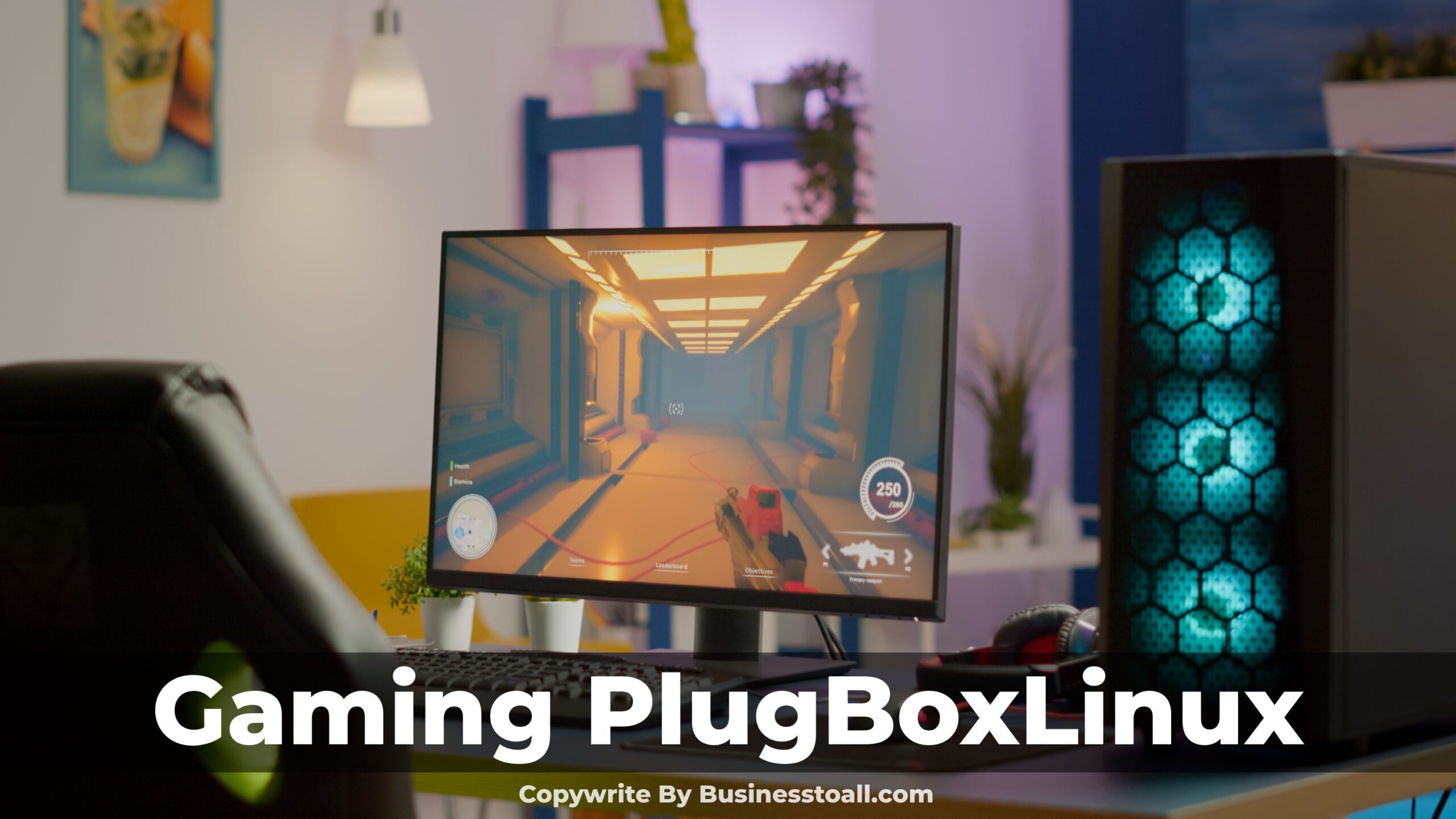The world of digital transformation has promised a steady flow of developments since its start in 1991 that include Linuxia, more promisCUously referred to as the Linux operating system. They established it for flexibility, which is unrivaled to date, for being open source, fairly priced, and secure.
Below is the information that shall be provided in this guide: The origin of Linux, how to install Linux, the pros of using Linux, fundamental commands used on Linux, applications and programs that can run on Linux among others. Let’s get started!
Table of Contents
Introduction
Linuxia, a powerful and versatile open-source operating system, is becoming increasingly popular among developers, system administrators, and tech enthusiasts. Its robust performance, security features, and flexibility make it a preferred choice for many. This guide aims to provide a comprehensive understanding of Linuxia, its benefits, and how to maximize its potential.
What is Linuxia?
Linuxia is a variant of the Linux operating system, designed to offer enhanced user experience and advanced functionalities. Like other Linux distributions, Linuxia is built on the Linux kernel and offers a wide range of features that cater to both beginners and advanced users.
Linuxia was developed to bridge the gap between user-friendly interfaces and the powerful capabilities of the Linux kernel. It has evolved over the years, integrating feedback from its vibrant community and incorporating the latest technological advancements.
Key Features of Linuxia
Linuxia is free to use and modify, thanks to its open-source nature. This encourages community collaboration and continuous improvement.
Security
Linuxia is known for its robust security features, including powerful firewall tools and regular updates. Its architecture minimizes vulnerabilities, making it a secure choice for sensitive environments.
Customizability
Users can customize nearly every aspect of Linuxia, from the desktop environment to system functions. This flexibility allows users to tailor the system to their specific needs.
Performance
Linuxia is optimized for performance, ensuring efficient resource management and faster processing speeds. It can run smoothly on both modern and older hardware.
Community Support
A vibrant community of developers and users contributes to Linuxia, providing support and resources for troubleshooting and learning. This community-driven approach ensures constant improvement and innovation.
Getting Started with Linuxia
Downloading the ISO Image
Visit the official Linux website and download the latest ISO image. This image is a bootable file that contains the Linux operating system.
Creating a Bootable USB Drive
Use tools like Rufus or UNetbootin to create a bootable USB drive with the downloaded ISO image. This will allow you to install Linux on your computer.
Booting from USB
Insert the USB drive into your computer and reboot. Enter the BIOS setup and change the boot order to boot from the USB drive.
Installation Wizard
The Linux installation wizard will guide you through the process. Select your preferred language, time zone, and installation type (dual boot or clean installation).
System Updates
Open the terminal and run sudo apt-get update && sudo apt-get upgrade to update your system. This ensures you have the latest security patches and software updates.
Installing Essential Software
Install necessary software like web browsers, office suites, and media players using the package manager. This can be done through the terminal or a graphical interface like the Software Center.
Configuring Settings
Customize your desktop environment, configure system settings, and set up user accounts. This allows you to personalize your Linuxia experience.
Mastering Linux Commands

Basic Commands
ls: Lists directory contents.cd: Changes the current directory.pwd: Prints the working directory.mkdir: Creates a new directory.rm: Removes files or directories.
File Management
cp: Copies files or directories.mv: Moves or renames files or directories.chmod: Changes file permissions.chown: Changes file ownership.
System Management
sudo: Executes a command with superuser privileges.ps: Displays currently running processes.kill: Terminates a process.df: Displays disk space usage.top: Monitors system processes.
Advanced Linux Techniques
Shell Scripting
Shell scripting allows you to automate tasks and streamline system management. Here’s a simple script example:
bashCopy code#!/bin/bash
# Backup Script
SOURCE="/home/user/documents"
DEST="/home/user/backup"
if [ -d "$SOURCE" ]; then
cp -r $SOURCE $DEST
echo "Backup completed successfully."
else
echo "Source directory does not exist."
fi
Networking
Managing network configurations is essential for Linuxia users. Here are some key commands:
ifconfig: Configures network interfaces.ping: Tests connectivity to another host.netstat: Displays network connections.iptables: Configures firewall rules.
System Monitoring and Performance Tuning
Monitoring system performance and tuning it for optimal efficiency is crucial. Use the following tools:
htop: An interactive process viewer.iotop: Monitors disk I/O usage.vmstat: Reports virtual memory statistics.sar: Collects and reports system activity.
Security Enhancements
Keep the system and applications updated to protect against vulnerabilities. Regular updates ensure you have the latest security patches.
Firewall Configuration
Use ufw (Uncomplicated Firewall) to configure firewall rules. This helps in protecting your system from unauthorized access.
Intrusion Detection
Install tools like fail2ban to monitor and prevent intrusion attempts. These tools help in identifying and blocking suspicious activities.
User Permissions
Limit user permissions using chmod and chown commands. This ensures that users have access only to the files and directories they need.
Popular Applications on Linux
Development Tools
- VS Code: A powerful code editor with extensive extensions.
- Eclipse: An integrated development environment (IDE) for Java and other languages.
- Git: A version control system for tracking code changes.
Productivity Software
- LibreOffice: An open-source office suite.
- Thunderbird: An email client from Mozilla.
- GIMP: A graphic editor for image manipulation.
Multimedia Tools
- VLC: A versatile media player.
- Audacity: An audio editing software.
- Blender: A 3D modeling and animation tool.
Troubleshooting Common Issues
Boot Issues
- GRUB Rescue: If the GRUB bootloader fails, use
grub-rescuecommands to recover. - Live USB: Boot from a live USB to troubleshoot and repair the system.
Software Installation Problems
- Dependency Issues: Use
apt-get -f installto fix broken dependencies. - PPAs: Add Personal Package Archives (PPAs) to access additional software repositories.
Network Connectivity
- Network Manager: Use the Network Manager to troubleshoot and configure network settings.
- Command Line Tools: Use
ifconfigandpingto diagnose connectivity issues.
Conclusion
Linuxia offers a robust, secure, and highly customizable operating system environment. By mastering its installation, commands, advanced techniques, and troubleshooting methods, users can fully leverage the power of Linuxia for various applications. Embrace the community-driven spirit of Linuxia and contribute to its ongoing development and improvement.
Frequently Asked Questions (FAQs)
What makes Linuxia different from other Linux distributions?
Linuxia offers a unique blend of user-friendly features and advanced functionalities, making it suitable for both beginners and experienced users.
Is Linux free to use?
Yes, Linux is completely free to use and modify, thanks to its open-source nature.
Can I dual boot Linuxia with another operating system?
Absolutely, Linuxia supports dual booting with other operating systems like Windows and macOS.
How can I contribute to the Linuxia community?
You can contribute by reporting bugs, suggesting features, writing documentation, or participating in forums and discussion groups.
Where can I find additional resources for learning Linuxia?
The official Linuxia website, forums, and various online tutorials and courses are excellent resources for learning more about Linuxia.
If you found our content helpful don’t forget to share it on your social media: Twitter






Get iPhone 15 Pro — Participate now! – https://1l1.su/LPIx